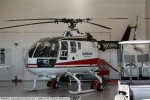Hello All,
Ok so I'm looking for gouge on the TH-73. Here's the deal I'm a former enlisted AMS2(NAC) served at HC-1, HM-12, HM-15, VR-51 and made the switch to the Army Warrant program and retired as a CWO4. Im currently the Lead Pilot and soon to be the Check Airman for my company flying EMS. My company has decided to go with the AW119kx for a replacement to our current aircraft the BK117. The president of my company is a retired Navy Captain who flew Sea Hawks back in the day and is considering the AW119kx as the replacement aircraft. I'm pretty sure he wants to model it after the TH-73, basically identical systems, navigation and autopilot. I've been searching the internet for the Operator' Manual "NATOPS Manual" so I can read ahead before I go to Philly for the transtistion course. Any PPT on systems and in-depth knowledge on the GENSYS cockpit and 3 axis autopilot would greatly help.
Thanks Joe
As a non RW guy, I have nothing to add other than welcome and cool career!



